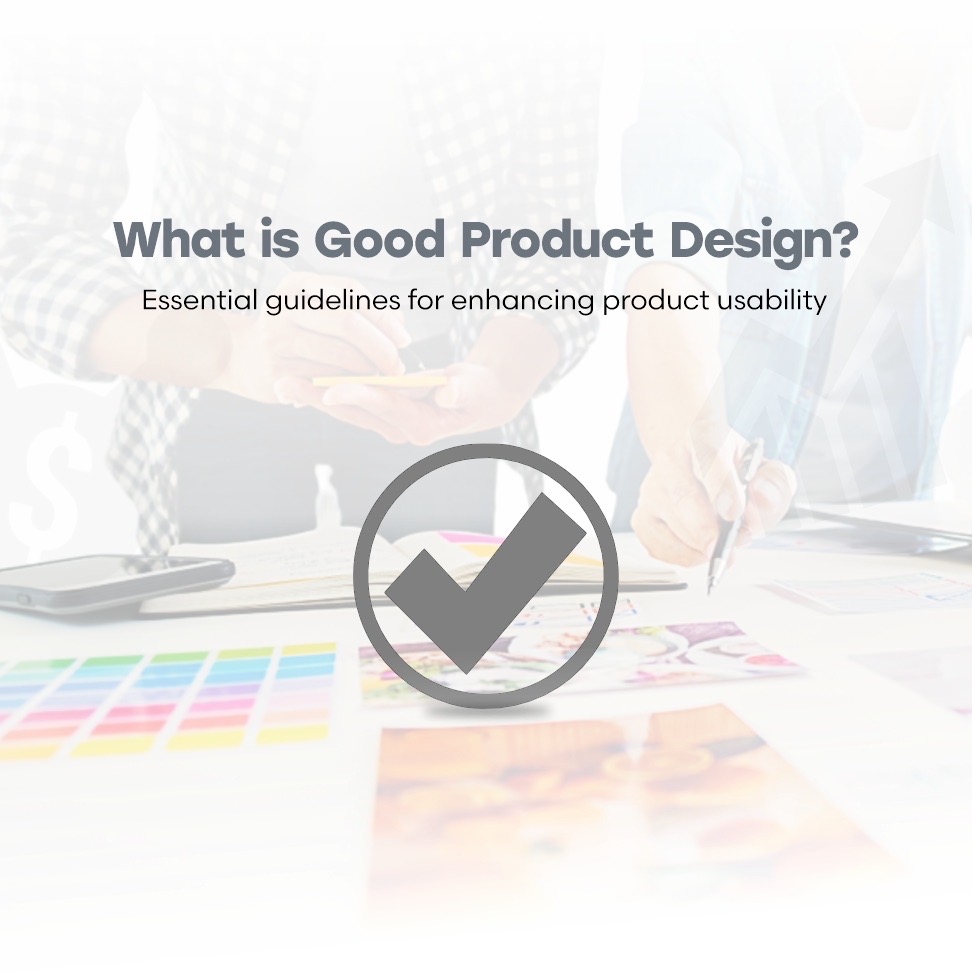The topic of good product design is often brought up when self-awareness becomes essential, whether through personal reflection or team-setting standards in design practices. Today, we have chosen to discuss a brief list of the characteristics of good product design.
Characteristics of Good Product Design
The characteristics of good product design are:
1. Practical and User-Friendly
The main priority is to ensure that a product functions correctly. The product must also possess the necessary ease of use and user-friendly design to ensure the success of both the product and your business. Product design is centered around problem-solving, not just aesthetics, even in UX where the MVP is created by focusing on functional, reliable, usable, and emotional design layers.
2. Considerate and Accessible
A product design needs to be suitable for all individuals. Keep in mind that accessibility is important for all individuals, not just those with permanent disabilities. For example, an injury to the hand may require a keyboard-only operation, while carrying heavy grocery bags may make opening your car trunk difficult without a hands-free feature. Understanding accessibility is complex and involves working closely with your development team and potentially an accessibility expert.
3. Thoroughly Tested And Confirmed
Sufficient input is needed from both users and product owners to guarantee the product’s effectiveness and optimization. This must be completed prior to, during, and following the implementation of the design. The optimal approach involves multiple cycles and doesn’t have to be costly (the traditional usability experts recommend testing with 4-6 users per iteration). The only way to create a successful design is by testing it with your users and clients.
Lacking validation, you might end up with a serviceable product that contains regrettable gaps that could have been prevented. In the worst-case scenario, you might have developed a high-cost product that does not effectively cater to its main audience and stakeholders or addresses the incorrect issues. Only when designers tackle the correct problems do they create successful products, even if they are talented. An excellent design with incorrect features will not succeed.
Read more: What is Product Design? A Comprehensive Overview
4. Straightforward And Purposeful
A product design and all its details require purpose and skill. Effective design is always deliberate and seldom happens by chance. The product’s design should be straightforward and functional, without being overly simplistic. If not, the design may hinder its own progress.
A high level of pixel-perfect precision and consistency is necessary when developing a strong design language system, whether it is a by-product or the main focus. In the future, these patterns may form the basis for other patterns or be blended in new ways in practical applications. However, make sure to maintain a simple and efficient design that aligns with your set goals.
5. Pleasing
Firstly, examine the criteria from 1 to 4. If you meet those requirements, it’s possible that the product brings a level of satisfaction that comes from a functioning product that works effectively. You might feel ready to progress, which is common for even a somewhat successful product MVP.
However, you can also add more intricate elements like micro-interactions, animations, adjusting the language and branding, and more. Also, it’s important to not deviate from intentional and inclusive design. Adding animations without purpose can be distracting or even hindering, especially for those with accessibility issues related to motion.
Read more: Product Design vs. UX Design: Understanding The Differences
6. Accessible and Expandable
When creating a product, it is important to consider its openness and scalability, especially when dealing with a design language or system that is constantly evolving. We understand that the design needs to be strong enough to encompass pertinent states and situations. However, it should have the capability to expand within reasonable limits and boundaries. Just like criterion 5, achieving the initial four criteria may show that your design is capable of scaling effectively.
7. Evergreen
The meaning of “evergreen” in this context is typically based on the particular requirements of a product. For media and e-commerce, companies often update the design of their websites every four years to stay current with trends. So maybe attempting to achieve a timeless product design is irrelevant in this case.
Are you interested in acquiring skills in product design? Try out Chigisoft today and gain access to all the necessary learning needed to enhance your skills!


Leave a Reply